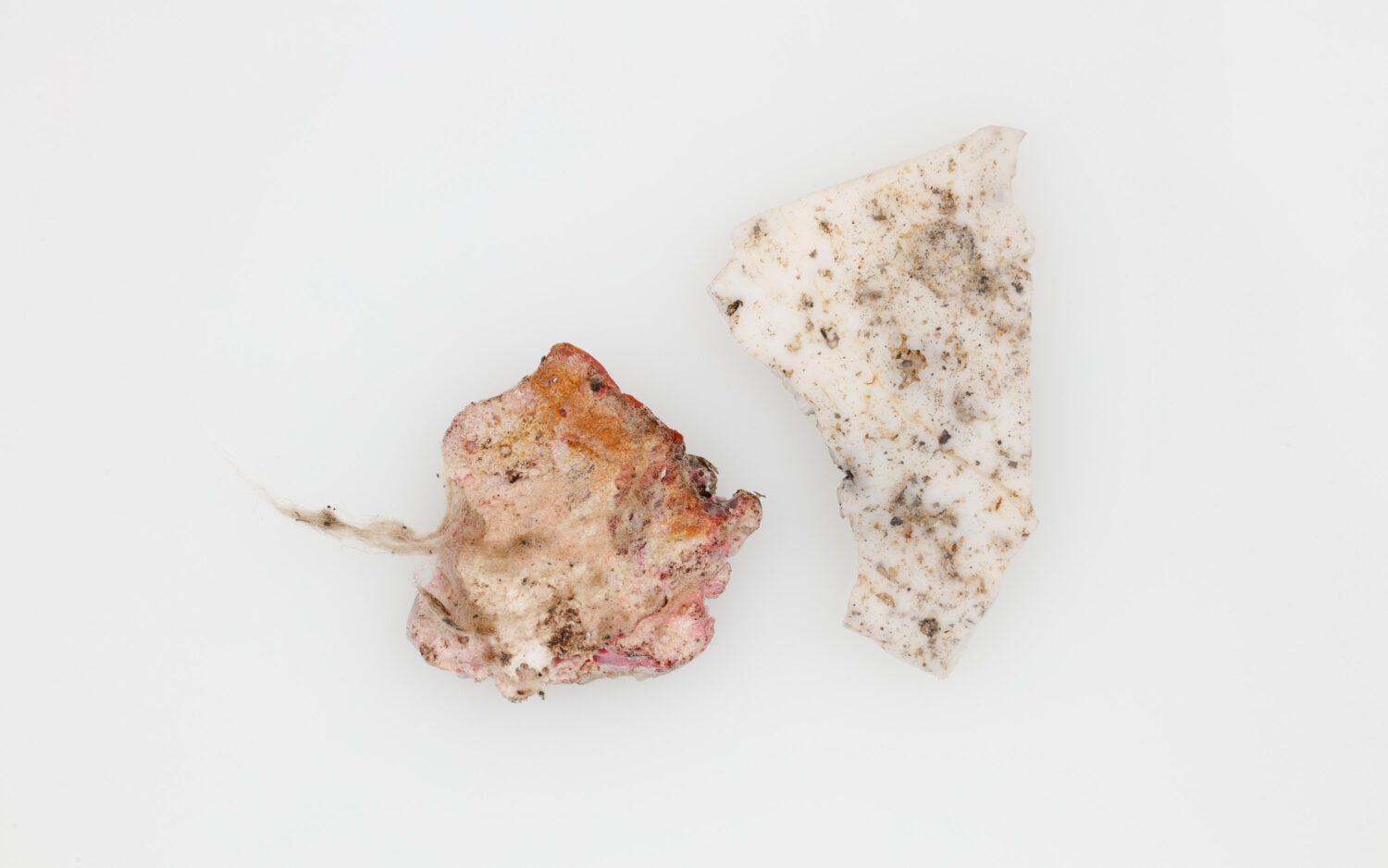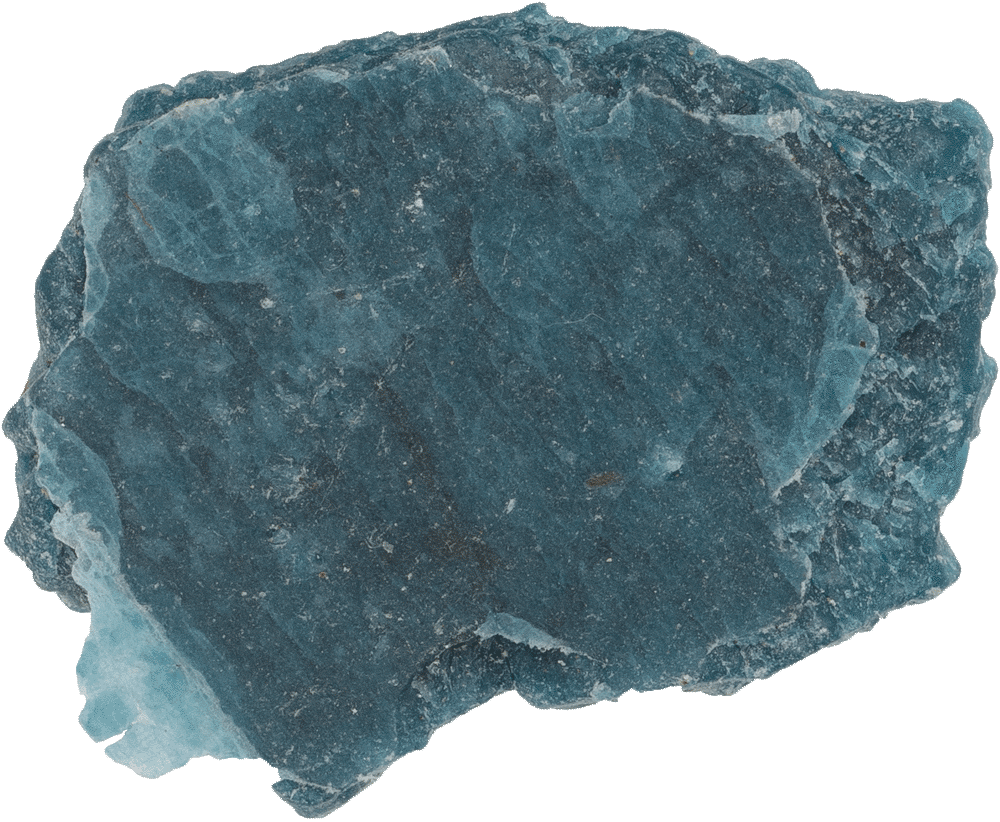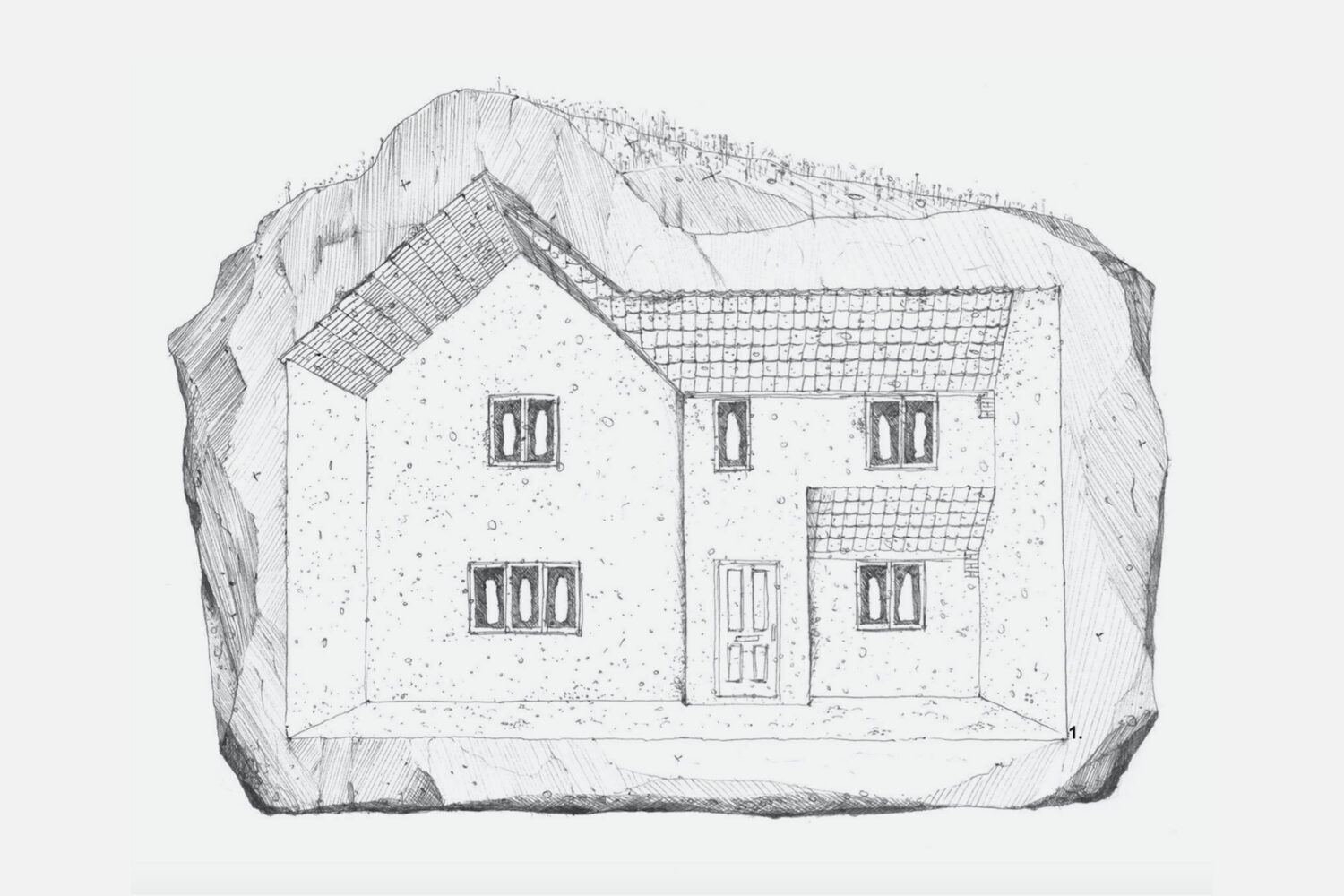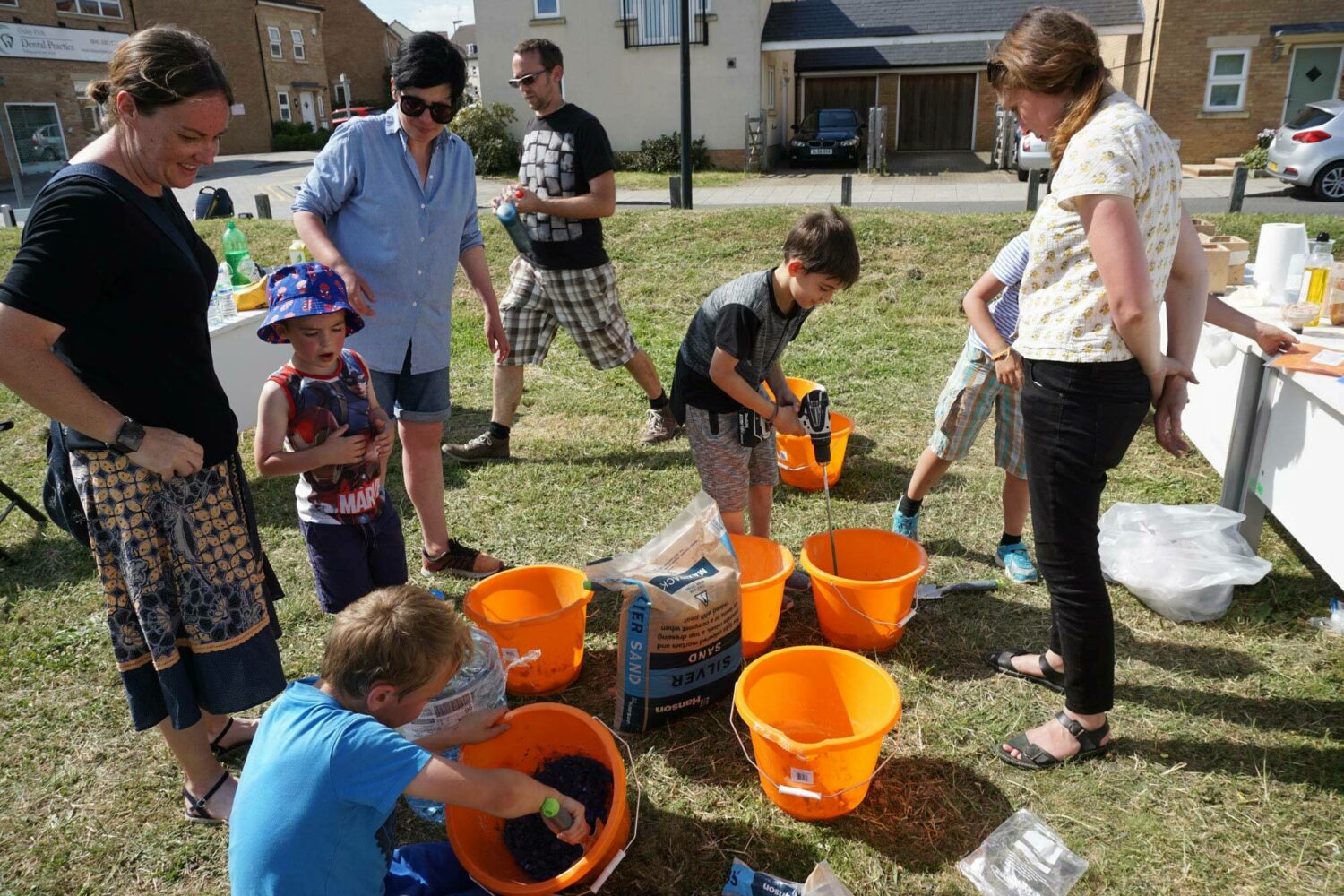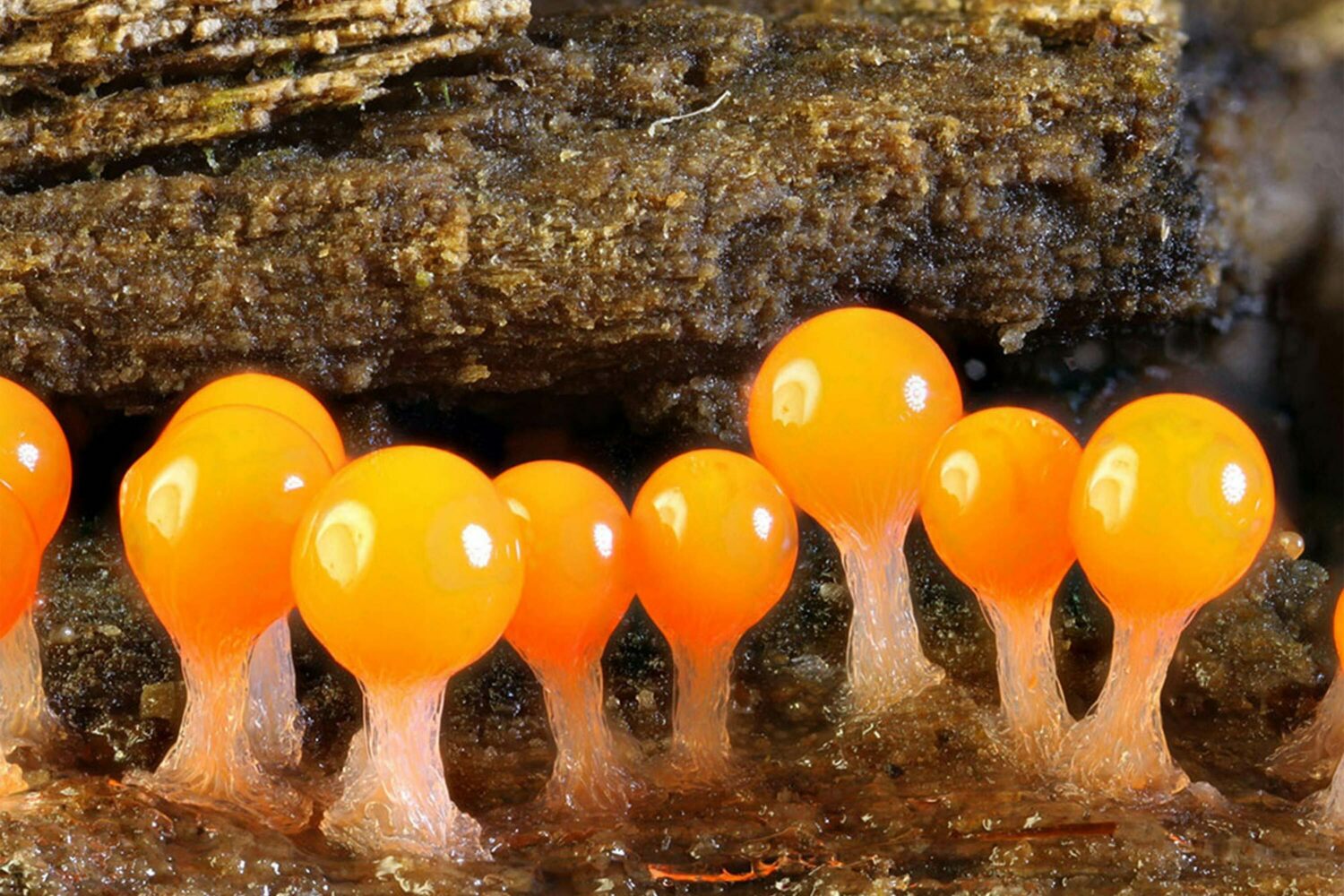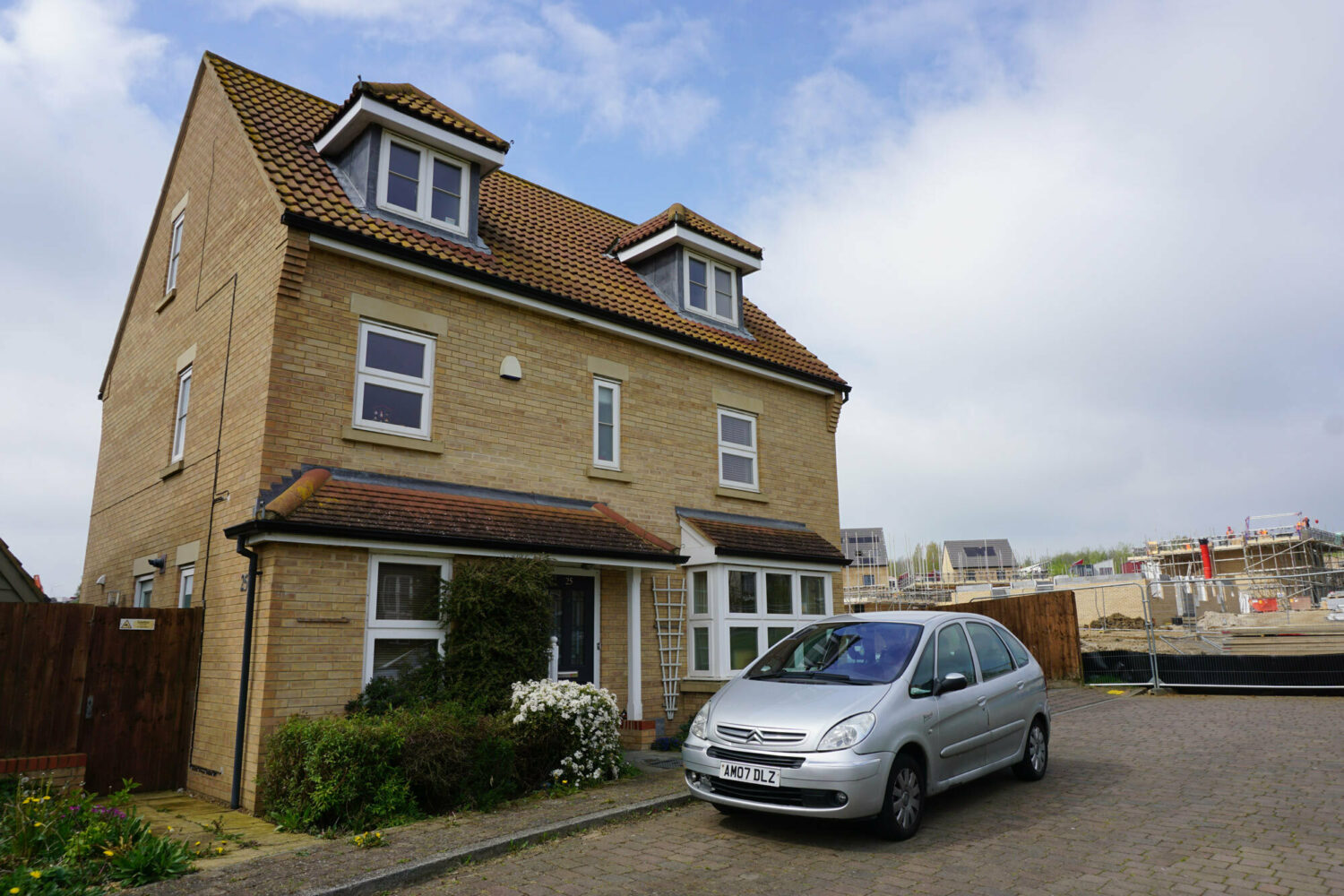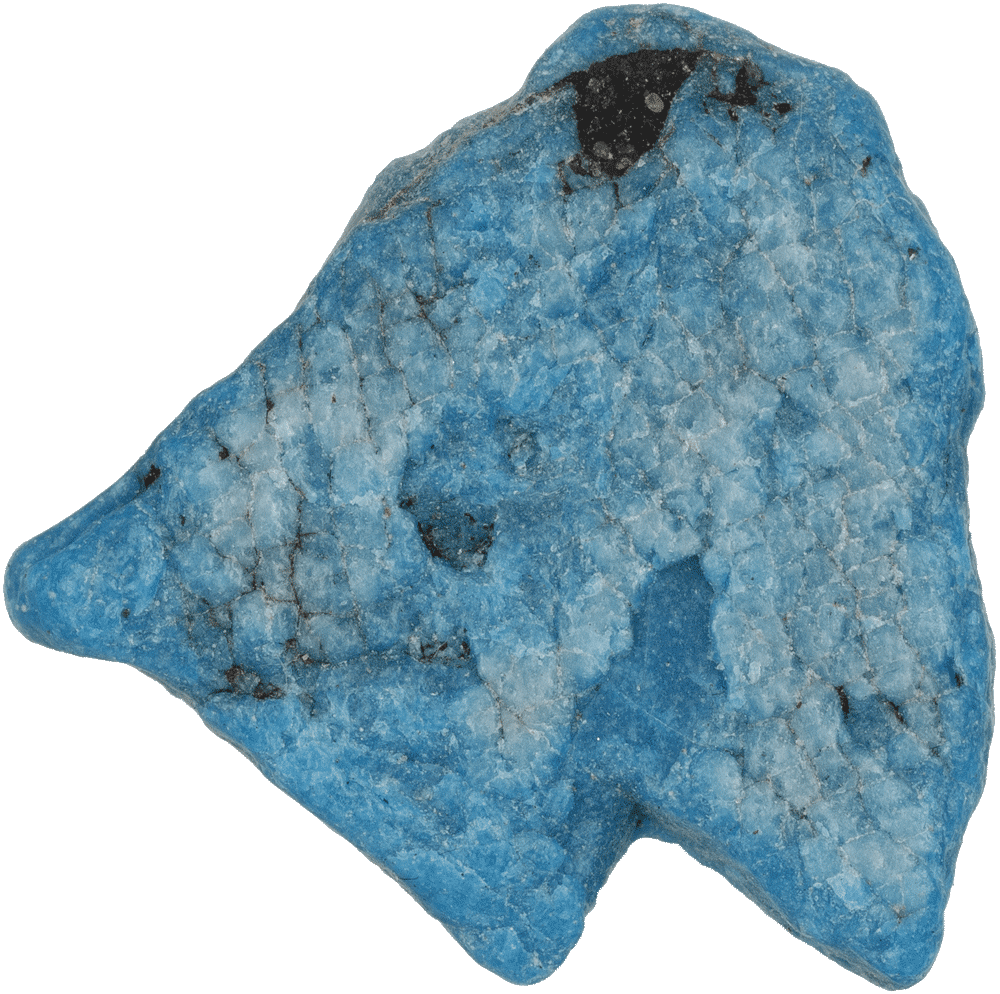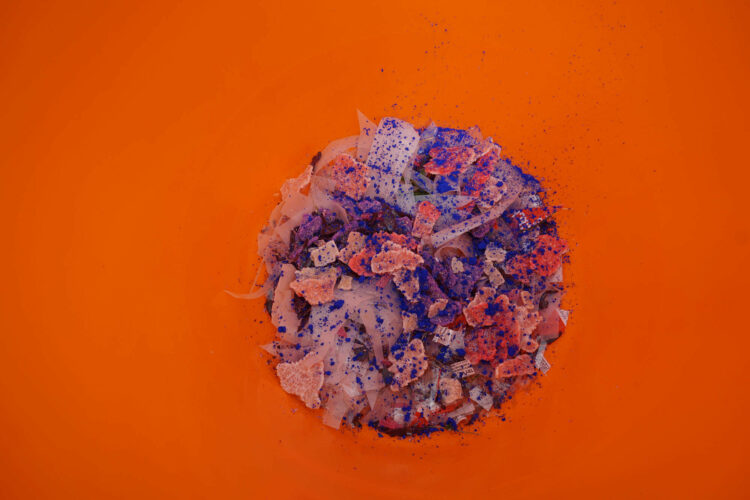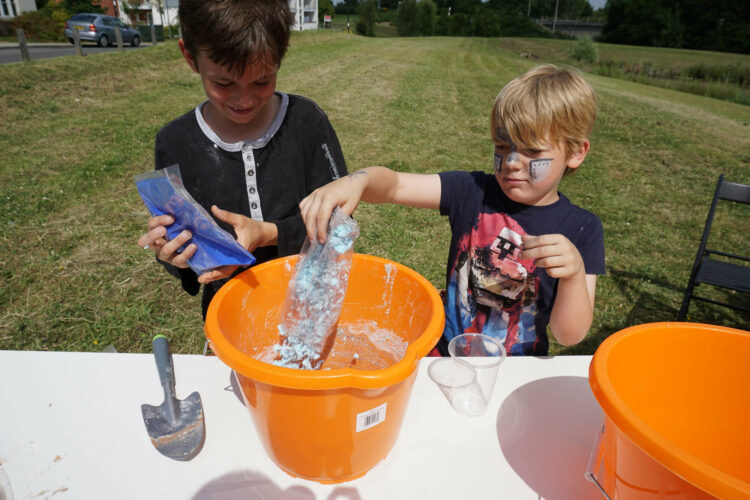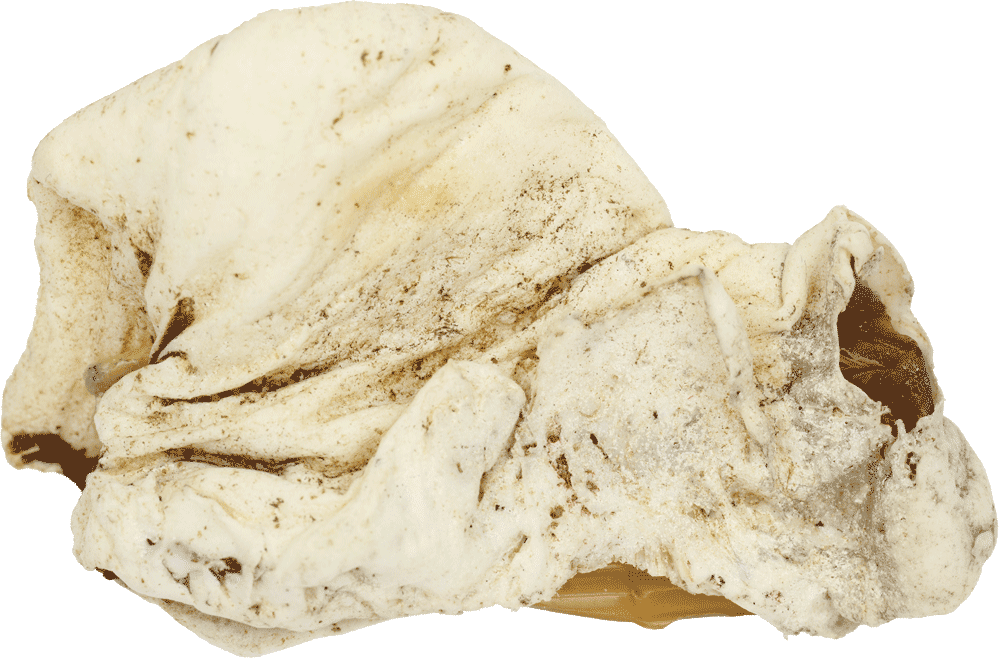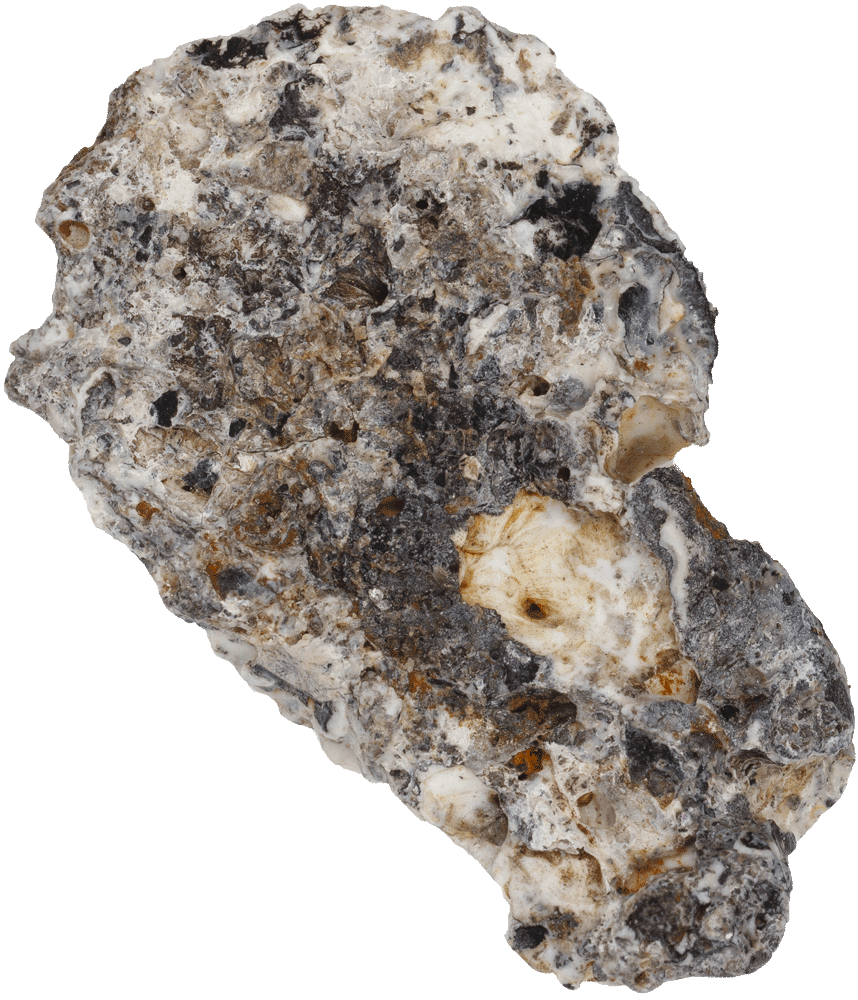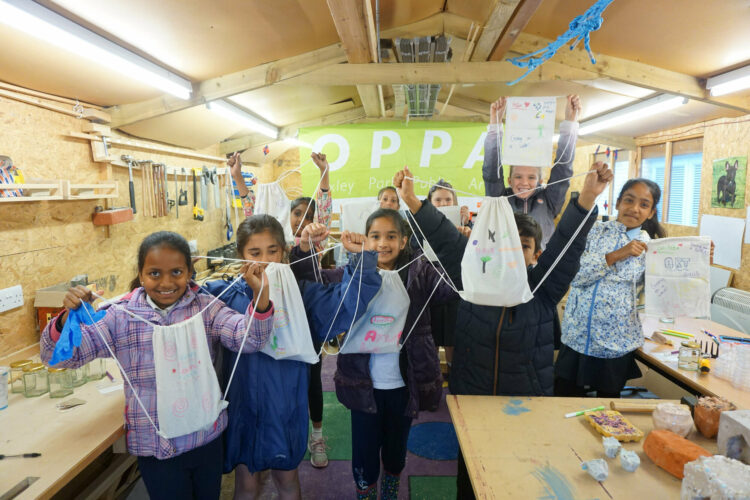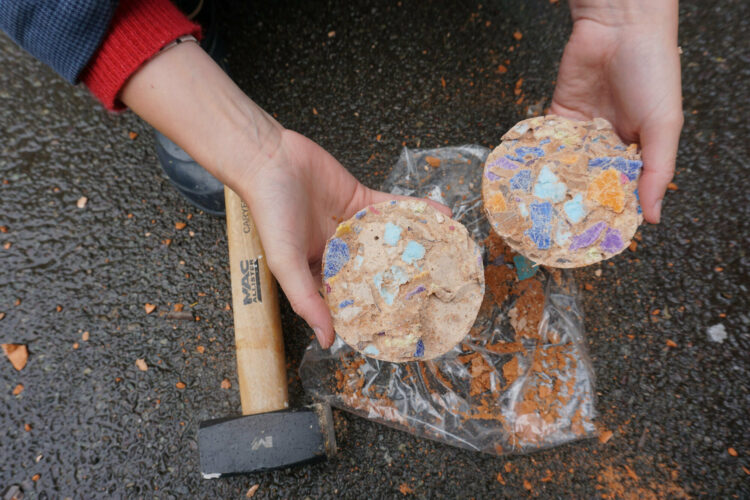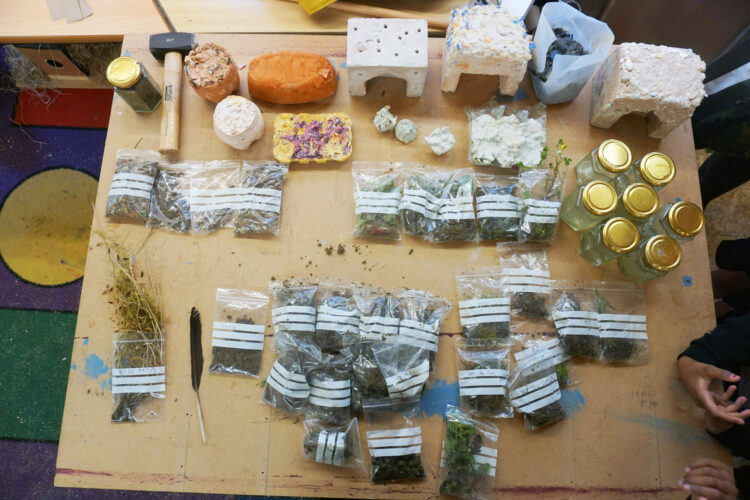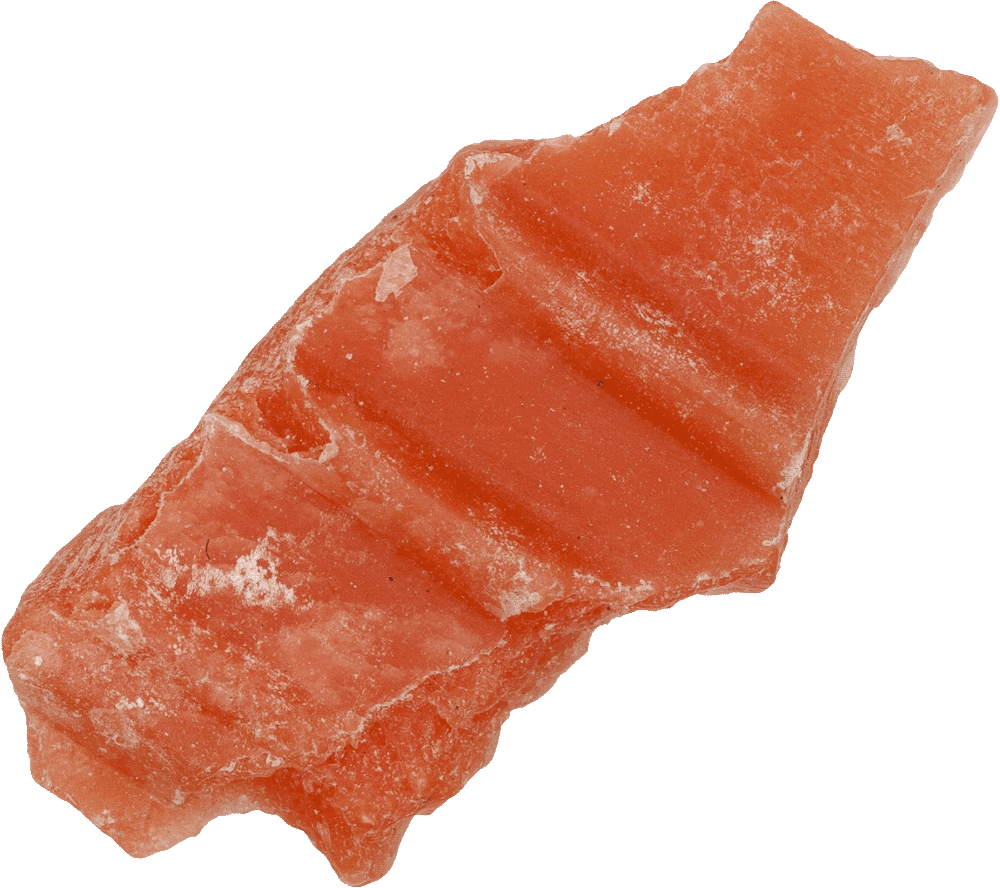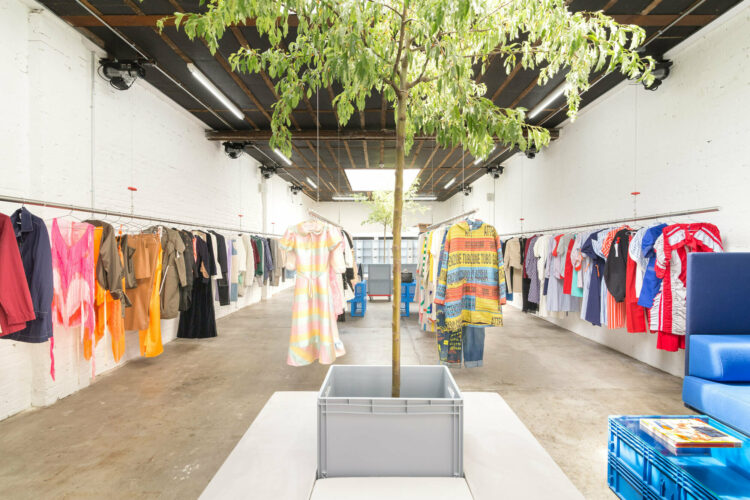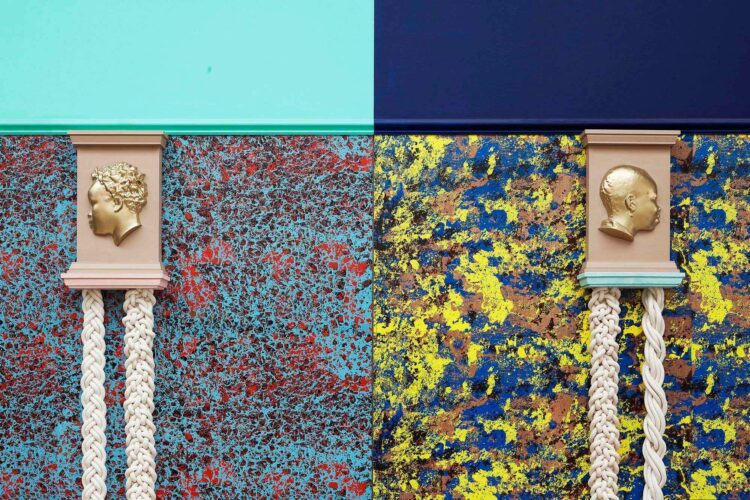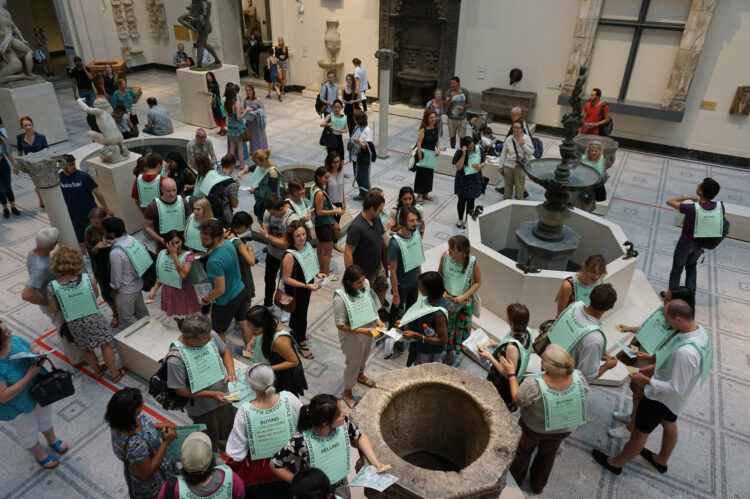Future Fossil by Something & Son (Andy Merritt and Paul Smyth) is a new public artwork located in Oxley Park, Milton Keynes. Developed following an intensive and in-depth community engagement programme and inspired by archeology, the passing of time, our relationship to the natural world, home and future ways of living.
Future Fossil features a life-size section of a typical Oxley Park house. Rising out of the ground as if newly excavated from the future, the house has been fossilized through the passing of time, exposed to climatic disaster and environmental change.
On closer inspection, the interior walls, ceilings and floors of the house are flecked with an array of brightly coloured man-made materials, which have been subsumed into the sculpture, echoing the processes by which plastics are now polluting every corner of the planet.
Future Fossil will create a very special new public space for Oxley Park, where community activities and cultural programmes can be enjoyed by everyone.
Situated in a specially designed landscape reminiscent of an archeological site, the exterior of Future Fossil and the surrounding area will be self-seeded and planted with selected plants, indigenous to the local area for many centuries, creating a semi natural habitat for flora and fauna.
